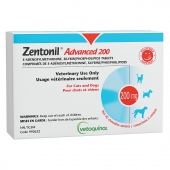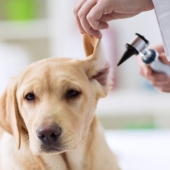Like humans, pets may also develop diabetes, with older and overweight pets being at an increased risk. Here are the answers to commonly asked questions about this medical condition.
1. What is diabetes?
Diabetes is a medical condition where the body is unable to control its blood glucose levels, whether because it produces no insulin or becomes resistant to it. Glucose is a type of sugar found in food that acts as an energy source for the body, while insulin is a hormone which allows this energy to pass from the bloodstream in to the cells of the body. Without insulin, cells become starved for glucose which forces the body to create more glucose by breaking down fat and muscle tissue. Glucose then accumulates in the blood, until it’s eliminated through urine.
2. What causes diabetes in dogs and cats?
Pet obesity is one of the main causes of diabetes in both dogs and cats. Older pets are usually more at risk, though diabetes may occur at any age. Certain breeds may also be predisposed to diabetes, such as Beagles, Labrador and Golden Retrievers for dogs, and Siamese or Burmese cats. Diabetes appears to be more common in female dogs than males, as well as neutered male cats.
3. What are the symptoms of pet diabetes?
Pet diabetes symptoms often appear gradually and may be easily mistaken for signs of an aging pet. Contact your veterinary clinic if you notice any of the following:
- Excessive thirst
- Frequent urination
- Increase or decrease in appetite
- Weight loss
- Cloudy eyes (especially with dogs)
- Overall fatigue
Early diagnosis and treatment of diabetes will greatly improve the quality of life of your pet.
4. Is there a pet diabetes treatment?
Diabetes can’t be cured, though it can be managed through medication, nutrition and physical activity. Your veterinarian will recommend a specific diet (typically high-fiber for dogs, and high-protein, low carbohydrate for cats) along with a daily exercise regimen. Diabetic pets require daily insulin injections to balance their glucose levels. While this may sound intimidating, your veterinary clinic will show you the proper administration technique, as well as going over the proper storage and handling of the insulin prescribed for your pet.
It’s important to follow your veterinarian’s instructions regarding the timing of injections and feeding your pet. This will help lower the risk of your pet experiencing low blood sugar (hypoglycemia).
5. Which diabetes signs require immediate attention?
An imbalance of insulin (either on overdose or underdose) can cause weakness, vomiting, diarrhea, ataxia (wobbly gait), tremors or even seizures. If your cat or dog suffers from diabetes and you notice any of the above, contact your veterinary clinic immediately for advice. Your pet may require emergency assistance, and their diet and medication may need adjustment.






